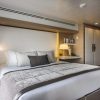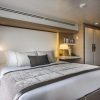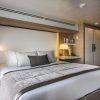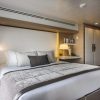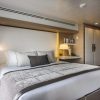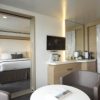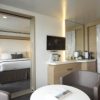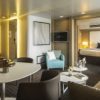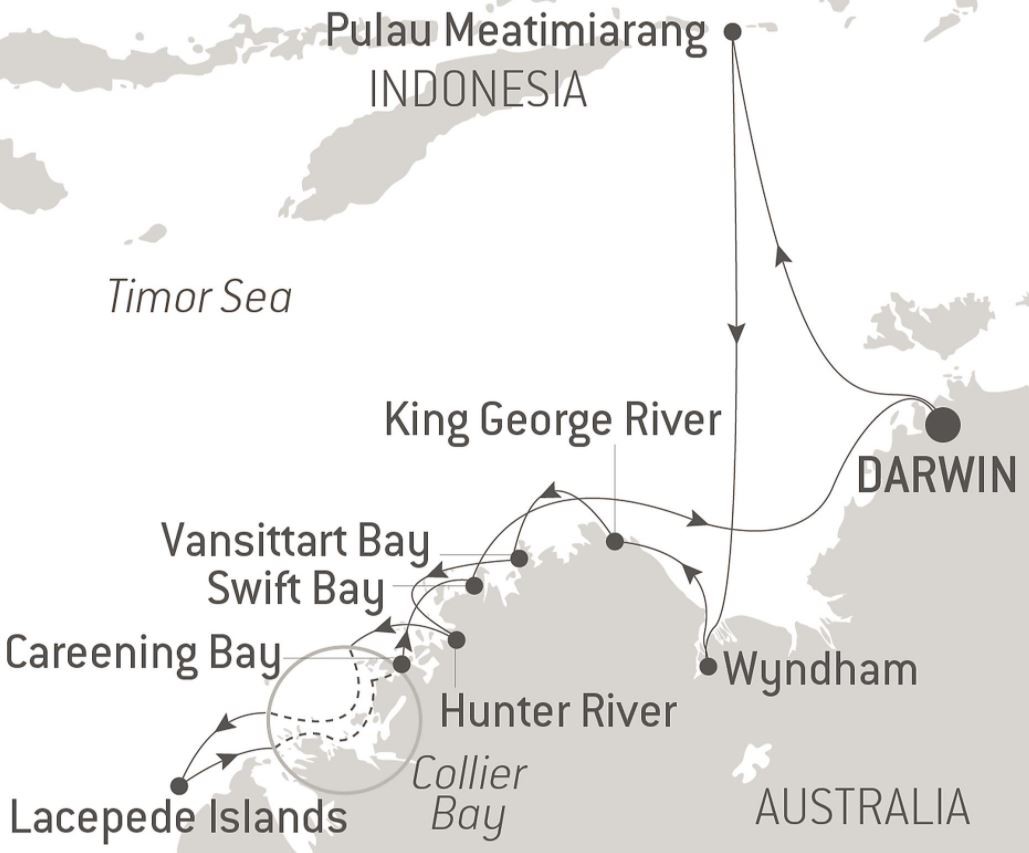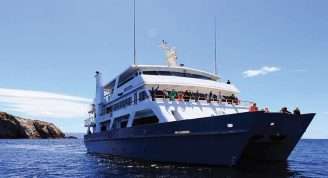Description
In partnership with National Geographic Expeditions.
From Darwin, embark aboard Le Soléal for an 13-day expedition cruise, in the heart of wild and grandiose landscapes of the Kimberley, one of the last unspoiled regions on the planet.
Along the most spectacular coastlines in the entire region, the rivers are gateways towards incredible fauna and scenery. The discovery of the King George River and the majestic Twin Falls, the highest single drop waterfall in Western Australia will undoubtedly be the highpoint of this cruise. As you approach the banks of the Hunter River, one of the most picturesque parts of the region, you will see wild mangrove forests where saltwater crocodiles live along with many species of birds.
In the hollow of the many bays dissecting the coast, secret coves and caves are home to ancient galleries of cave art, exceptional vestiges of the first people to settle on these sacred lands.
In the Lacepede Islands nature reserve, an important breeding site for green turtles, you’ll be able to observe colonies of sea birds: brown boobies, Roseate terns, Australian pelicans, etc.
You will also visit Collier Bay, where you will be able to admire a spectacular example of the impact of the tides cascading in mini-waterfalls as the entire Montgomery reef appears to rise from the turquoise-blue waters of the bay.
During your stopover in Careening Bay, you’ll discover moving evidence left behind by the first explorers who ventured along the rugged coastline at the beginning of the 19th century.
With their falls, abrupt gorges, savannah and calm waters, the wild lands of the Kimberley are the promise of an exceptional adventure.



